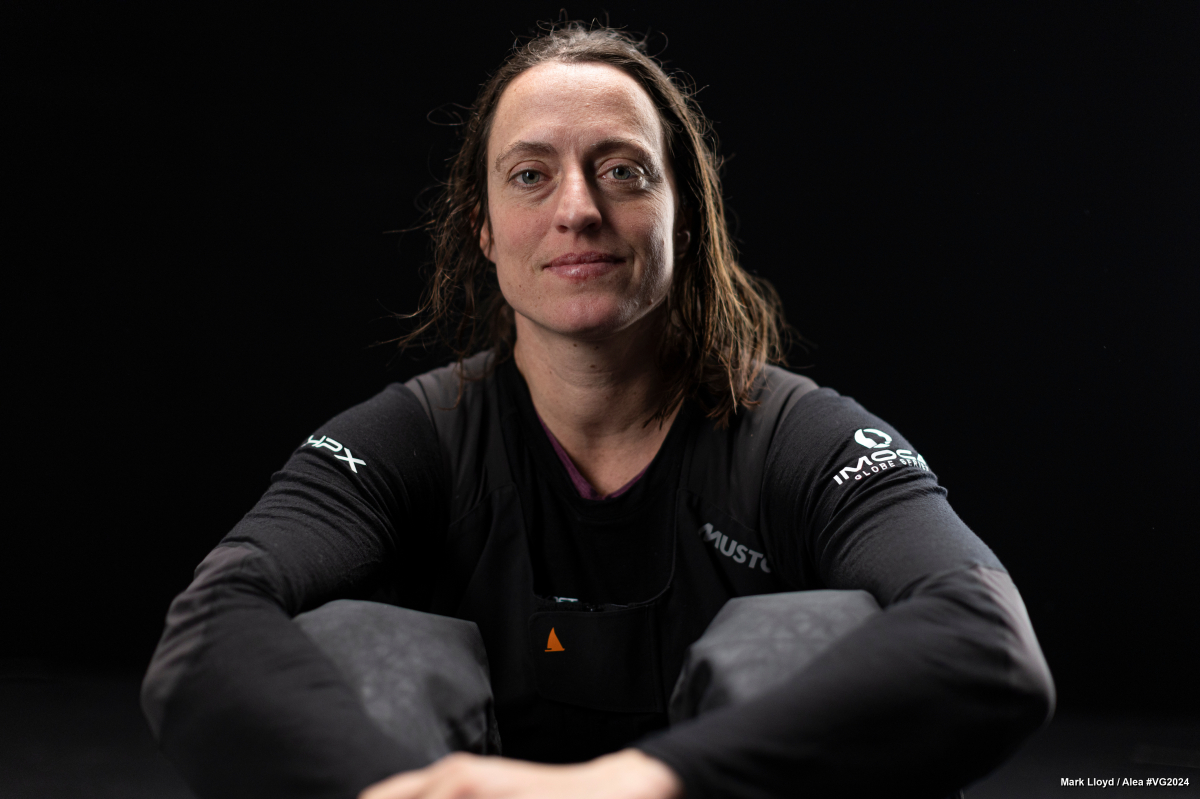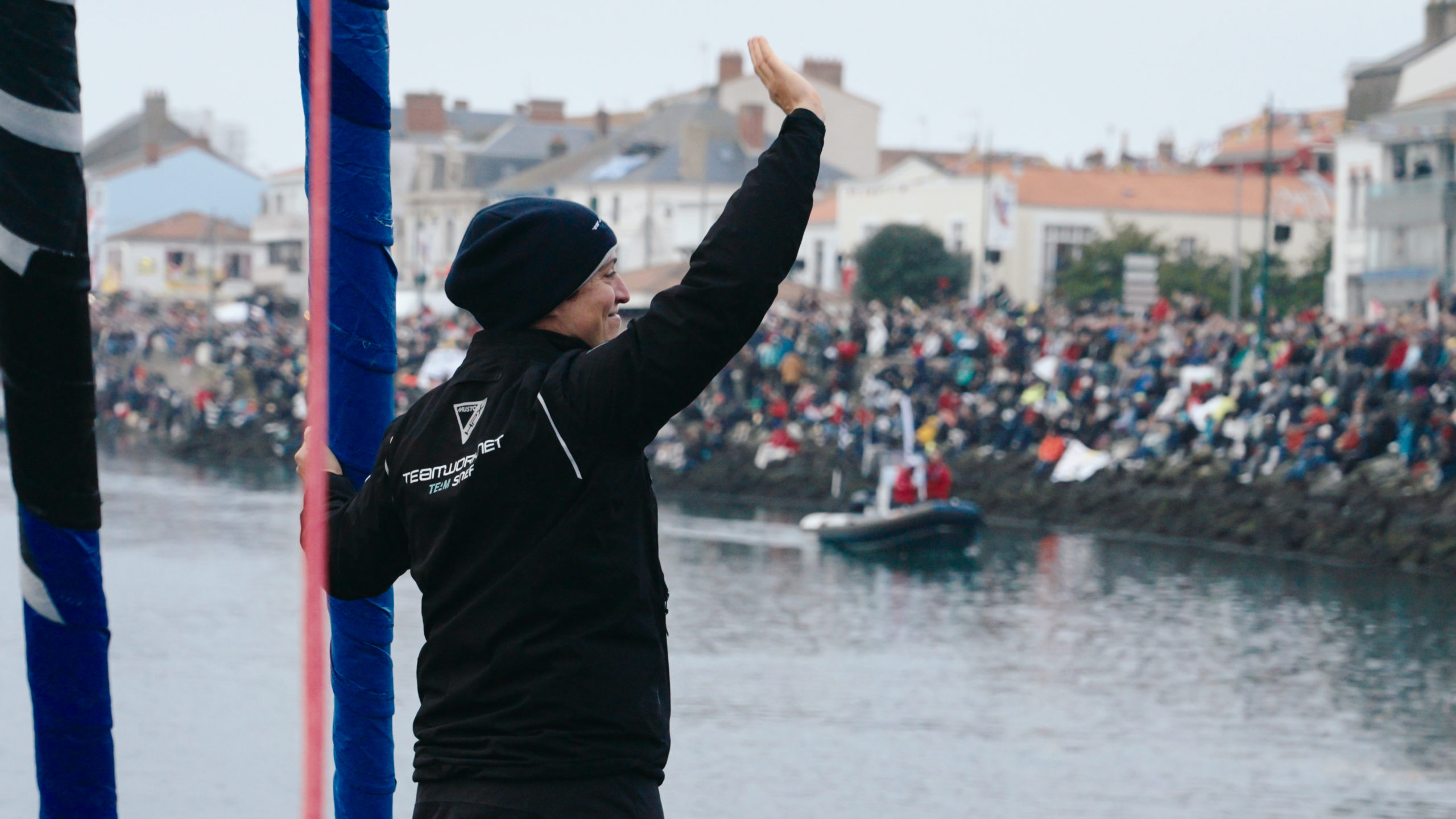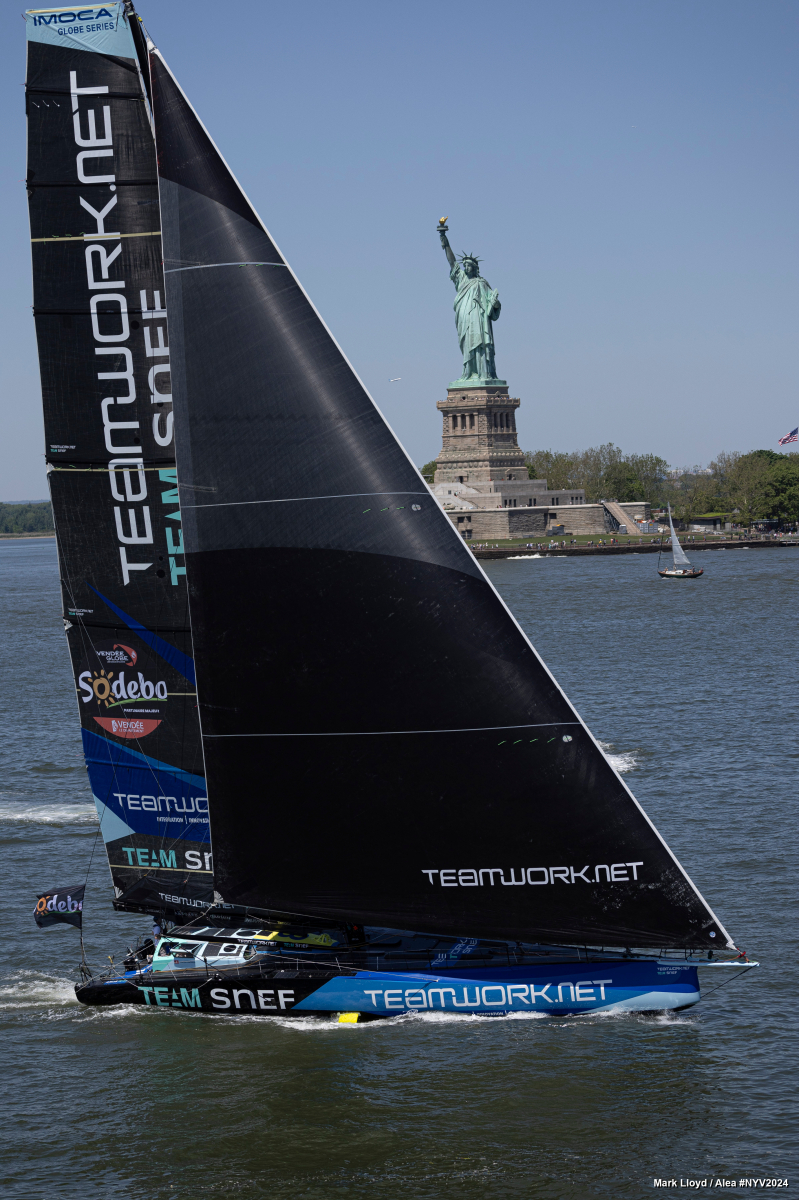Last November, my sister Elodie announced that she was leaving the Alinghi Red Bull Racing (ARBR) team because the remuneration conditions announced and maintained despite the discussions were far below the averages applied in our sport. Months have gone by. Elodie is no longer with the team and has returned to sailing for others. The conditions offered to women by ARBR have not changed.
Let’s put this in context. Each America’s Cup Challenger is obliged to field a youth team and a women’s team in addition to its main team, which will compete in the historic AC75 event. Alongside the main event, the youth and women’s teams will compete in a Youth America’s Cup and a Women’s America’s Cup in AC40s, the flying monohulls currently used by the men’s teams for training purposes. To be part of a youth team, you have to be under 25. For women, there is no age limit.
ARBR has chosen to offer the same remuneration conditions to young people and women. It’s the challenger offering the worst financial conditions to its female sailors.
The women selected for Switzerland were offered around one sixth of what Elodie normally earns per day. One sixth means that she would have to work 30 days in a row, without weekends, to earn what she normally does in 5 days. The conditions offered by ARBR did not allow her to be financially independent. Elodie has been living in France for several years. It will be even more complicated for sailors living in Switzerland, where the cost of living is very high, to manage such a low retribution.
While the fact that the Women’s America’s Cup is a stepping stone for female sailors has been put forward by ARBR as a plea to justify the low remuneration, it should be remembered that Elodie has been a professional regatta sailor for over 15 years, and that competitive sailing is not hobby for her, but her profession. Elodie has already taken advantage of these stepping stones years ago, when at the age of 20-25, you sometimes agree to go sailing for free or for very little to gain experience. Today, she’s an appreciated, sought-after and respected sailor in offshore and inshore racing circles, having worn out her weather gear and neoprenes for so long on all types of boats, having raced twice in the Volvo Ocean Race and rounded the Cape Horn twice, having been part of the fastest crew in the last Rolex Fastnet Race.
I also think of the sailors who chose to stay despite the conditions proposed by ARBR. I think of Nathalie Brugger, who represented our country three times at the Olympic Games, of Maja Siegenthaler, 4th at the Tokyo Olympic Games in a 470 dinghy, or of my little sister Laurane, a professional for years as well and main female sailor on the SailGP Swiss team in F50. These sailors are all between thirty and forty years old and have all this experience behind them. However, we decided to pay them at the same level as young people aged 18-25. We could have chosen to operate differently. It is in fact completely accepted and common in our environment that, on the same project, the remuneration of the different team members differs depending on the experiences, roles and responsibilities of each person.
One of the other plea of the leaders of the ARBR project to justify the very questionable conditions proposed to the Swiss female sailors is that they do not have experience in AC40. However, the men recruited for the main team also had no experience on these very special flying monohulls before joining the team. Some had much less cumulative navigation experience than Elodie and her female colleagues, but that did not prevent them from being properly employed as soon as they joined the team. On the other hand, moving from one type of boat to another is an integral part of our profession. This is so often the case in sailing with the diversity of boats, formats, and types of crews that we can meet. Since most skills and experience are cross-cutting, professional sailors get paid, even when they move to a new boat.
To end on this subject, I do not believe that a team would have dared to submit to men aged 30 to 40, with experience and skills equal to theirs, the conditions proposed to the female sailors that I mentioned above. We do not ask experienced male professional sailors, in projects who have the means, to choose between being able to live properly or being able to sail on boats that make them dream. We still ask it to women and that should no longer be the case.
So, over and above the Swiss team’s problem which makes me react, it highlights the fact that even today, women’s sailing experience is devalued in comparison with men’s. Olympic and world champions are not as respected or taken as seriously as their male counterparts. Their skills are less valued and, consequently, when they join professional teams, this has an influence on their remuneration. Jo Aleh, New Zealand Olympic sailor and world champion, confirms in a World Sailing Trust article published in November 2023: « SailGP was the first professional circuit on which I was paid as a full member of a team. Apart from that, the norm for me has always been just expenses. This applies to most female sailors I know. The quote “You should be happy to do it for the experience” has become less and less digestible over time.”
As the World Sailing Trust points out, it is obvious that having to continually make sacrifices or complicated trade-offs, and observing a too large salary gap with their male counterparts can discourage some female sailors. They will then turn to other careers and this contributes to limiting the female presence on the professional circuits.
It should be mentioned that there are some positive evolutions in our sport. Great opportunities for women have emerged in our industry over the past ten years. We can give the example of several Olympic sailing events which require gender diversity and several offshore racing events which have also followed this path. This created a real growth in the presence of women in certain races and allowed female sailors to gain experience on boats to which they had little or no access previously. Today there are also specifically female selections for great projects that are well managed and financed. It is important to highlight these initiatives among others which are essential and which constitute good steps forward. But these positive changes are not yet reflected on all circuits or on all the aspects of projects. The example of ARBR shows us that beyond the evolution of opportunities, there is still a long way to go to achieve a real equality.
There is therefore still significant work needed from federations, organizations, teams and management to support women’s sailing deeply. We must continue to change mentalities. To truly support women in our sport, projects and circuits that are becoming more feminine must offer women sailors real roles, real responsibilities and the same working conditions and remuneration as their male counterparts. We must also give them the structures and means necessary to be able to progress quickly on the supports newly available to them.
We need to raise awareness among female sailors so that they know what amounts they should ask for based on their experience and depending on the class or events they are joining. Female sailors must allow themselves to talk about remuneration with their female and male colleagues in order to better be able to position themselves and thus sign contracts and make commitments while being well informed. We must encourage them to dare to ask to be paid their fair value and to be paid on an equal basis. As women must all take the responsibility to stand up for our rights, but it is essential that to be supported by everyone on this journey.
To do this, sailing federations must continue the work they have been doing for several years to promote the feminization of our sport. We must continue to move towards a stronger female presence at all levels of federations so that women’s rights are at the heart of concerns and commitments. We must continue to put in place frameworks so that women can train, improve, run, meet, support each other, find out about their rights.
Managers, sponsors, skippers must question themselves when they recruit a female sailor, technician, project manager, etc. to know if they offer her the same opportunities as a man and to require themselves to be fairer. It should be remembered here that lower remuneration not only has an influence on the present moment of female’s lives, but also on their retirement conditions and that this therefore makes them more precarious in the long term. Savings on sailing projects must no longer be made to the detriment of women.
For the different classes, one way to support women could be to follow the SailGP initiative, where a substantial minimum daily rate per team member is defined and recommended to teams and is generally respected.
I dare to hope that one day all this will be fluid and that no female sailor will have to fight to be paid her fair value, that no female sailor will have to refuse a project which nevertheless makes her dream for financial reasons.
There are certainly still plenty of other lines of thought and action to follow than those I have mentioned. At all levels, let’s be attentive, let’s be creative, let’s all take part in change. Let’s denounce what is going wrong and seek solutions. It is proven that companies and projects where there is more diversity of profiles, genders and diversity at all levels are more efficient and more pleasant and motivating for everyone. Let’s, therefore, continue to work for more inclusion, for more fullness in the projects and organizations linked to our sport.
Justine
Sources :
- World Sailing Trust, “Fair pay – a road block to greater equity”, November 2023, https://worldsailingtrust.org/news/fair-pay-a-road-block-to-greater-equity
- World Sailing Trust – Victoria Low, “Women in Sailing – Strategic Review”, December 2019, https://www.sailing.org/tools/documents/WSTWiSStrategicReviewReport2019PrintAW-%5b25866%5d.pdf




